The quick answer to this question is yes, you can burn cedar in a fireplace. However, there are some things you need to take into consideration before doing so. In this article, we will discuss the ins and outs of burning cedar in a fireplace, including what type of cedar to use, how much to use, and how to get the most out of your fire. We will also review some popular products that allow you to burn cedar in a fireplace safely and easily.
Should You Use Cedar?
When it comes to burning cedar in a fireplace, there are many factors that need to be taken into consideration. The primary factor is the type of wood you plan on using. Cedar is known for being one of the most aromatic and fragrant types of wood, but it also has its drawbacks. It produces a lot of smoke which can make your house smell bad and even cause irritation if inhaled too much. In addition, burning cedar in a fireplace can release toxins into the air which could be hazardous to your health.
When buying cedar wood for indoor burning, look for logs that are aged and have been dried properly. This will ensure that you are getting quality wood that is ready to be burned without producing too much smoke or creosote buildup. Additionally, avoid using green or wet wood, as this can cause an unsafe fire and poor air quality. [1]
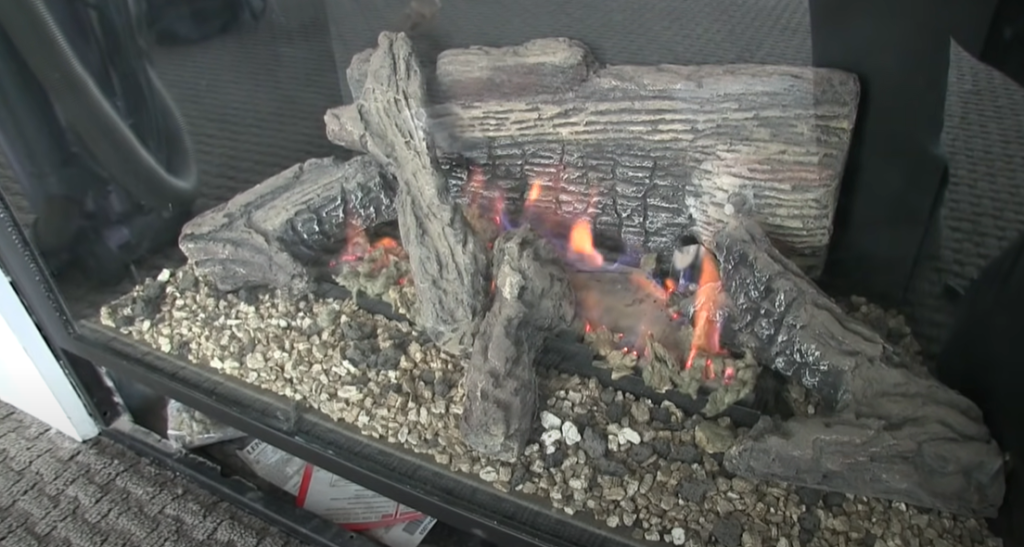
Why Should Cedar Not Be Used In A Fireplace?
Cedar is a softwood and like all softwoods, it produces more creosote and soot byproduct than hardwoods. This can increase the risk of chimney fires as creosote build-up clogs the inside of the flu leading to higher temperatures within the fireplace. In addition to this danger, burning cedar also releases harmful toxins into your home. These toxins include carbon monoxide, formaldehyde, and volatile organic compounds (VOCs) that could potentially cause health risks for those with asthma or allergies.
So if you’re considering using cedar in your fireplace, it’s important to weigh up these risks before going ahead. It’s always best practice to consult with a qualified professional about what type of wood is safe to use in your fireplace. [2]
Can You Burn Cedar Wood Indoors (Is It Safe)?
Burning cedar wood is safe to do indoors if the fireplace and chimney are in good condition. This means that there must be no signs of deterioration or damage on either the fireplace or chimney, as this could lead to an unsafe fire and poor air quality indoors. Also, consider only using small pieces of cedar wood with a low moisture content, as larger logs are more likely to cause smoke and creosote buildup.
In addition, make sure to properly maintain your fireplace by having it inspected regularly by a certified professional. This will ensure that your fireplace remains safe for burning cedar wood. [3]
Is Cedar Smoke Toxic?
Cedar smoke is not toxic, although it does contain natural compounds that can be irritating for some people. The smell of cedar smoke can cause eye and throat irritation in those with respiratory problems or allergies. It is important to understand that burning any type of wood indoors can produce smoke, so if you do decide to burn cedar in your fireplace make sure to open a window and check the air quality frequently. Also, if you have any respiratory issues or allergies, it is best to avoid burning cedar in your fireplace altogether.
Cedar kindling can be used as a starter material for a fire, but it should not be the main fuel source of the fire. When using cedar kindling it is important to only use a few pieces and ensure that they are properly dried so that they burn quickly and efficiently. After lighting the kindling, add logs of other types of wood such as oak or maple to maintain a strong and steady flame. [4]

Does Burning Cedar Create Creosote?
When it comes to burning wood in the fireplace, creosote is a major concern. Creosote is a tar-like residue that builds up in the flue after wood burning, and if too much accumulates, it can lead to chimney fires and other hazards. Burning cedar will create some degree of creosote deposition, as all woods do – but as long as you have your chimney cleaned regularly and practice good fire safety practices (such as never leaving a fire unattended), then you should be able to safely burn cedar in your fireplace. [5]
Advantages To Using Cedar To Burn In A Fireplace
A classic and beautiful way to burn cedar in a fireplace is by using chunks of split logs. Burning cedar in your fireplace has several advantages. As a softwood, it lights quickly and will keep the fire roaring for hours with its high BTU output. The aroma of burning cedar wood is pleasingly warm and fragrant, adding an extra layer of comfort to any home. It also produces less smoke than other woods like pine or oak, making it easier on your lungs as well as the environment.
The most important factor when considering any type of firewood is moisture content (MC). Cedar has a lower moisture content than many other types of wood, which means it burns hotter and cleaner while releasing fewer toxins into the air. Additionally, cedar logs typically have fewer knots, which means they can produce a more even flame and less soot in your chimney.
Disadvantages To Using Cedar To Burn In A Fireplace
Using cedar in a fireplace is not without its disadvantages. Cedar has a high sulfur content, which can cause the formation of soot and creosote on the walls of your chimney. The oils released when burning cedar can also create unpleasant odors that linger in your home. Additionally, if you use too much cedar or if it isn’t properly seasoned, it can produce sparks that fly out of the fireplace and may catch other materials on fire.
Another potential downside to using cedar is that it produces more smoke than other types of wood due to its low density. This smoke can be irritating for those with respiratory issues and could potentially contain dangerous toxins like carbon monoxide, so proper ventilation should always be used when burning cedar.
Finally, the cost of cedar can be fairly high compared to other types of wood. While it may be more efficient and burn longer, the initial cost might not make it a viable option for everyone.
Even with these potential drawbacks however, many people still decide that burning cedar in their fireplace is worth trying out. If you’re considering using cedar in your fireplace, there are several steps that should be taken to ensure safe operation and a pleasant experience.
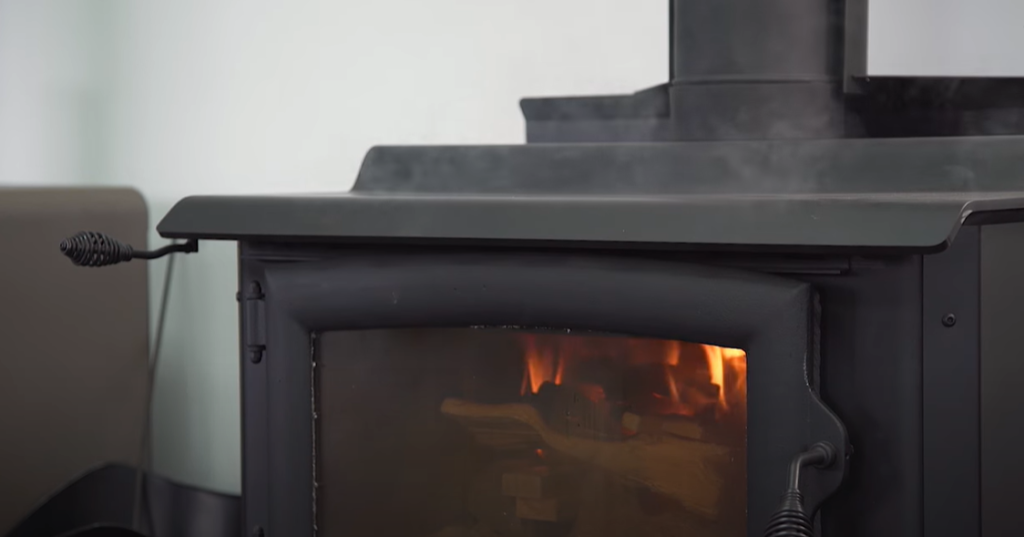
Useful Tips For Burning Cedar In The Fireplace
If you decide to burn cedar in your fireplace, there are a few precautions you should take. In order to prevent the buildup of creosote, which is caused by incomplete combustion, you should make sure that your wood stove or fireplace has adequate air supply and is well-ventilated. Additionally, it’s important to keep the fire burning steadily and evenly; allowing it to smolder can lead to the accumulation of more creosote deposits.
Finally, take care not to overload your fireplace with too much wood at once; an overly large fire might cause an increase in smoke production and excessive creosote deposits. If you’re burning larger pieces of wood like cedar logs, it can be helpful to add smaller kindling or paper underneath them for more efficient combustion. As always, practice safe burning techniques and maintain a clean chimney when using your fireplace.
Burning cedar in your fireplace can be a great way to add warmth and atmosphere to your home – just make sure that you follow all safety precautions, use properly seasoned wood, and keep an eye on the fire at all times. With these tips in mind, you’ll be well on your way to enjoying a cozy indoor winter fire.
Comparison of Firewood Types for Fireplace Burning
Choosing the right firewood for your fireplace is essential for safety and efficiency. Below is a comparison of different types of firewood, including cedar, for fireplace burning.
| Firewood Type | Characteristics | Flame Aesthetics | Burn Time | Residue and Emissions |
|---|---|---|---|---|
| Cedar | Softwood, ignites easily, aromatic, fast-burning, and produces a pleasant scent. | Creates a beautiful flame with a vibrant, crackling appearance. | Quick burn, short-lived flame, excellent for kindling or quick fires. | Produces moderate residue and ash, but minimal creosote buildup. Generally clean-burning. |
| Oak | Hardwood, dense and slow-burning, long-lasting coals, minimal creosote. | Produces a slow, steady flame with a classic fireplace appearance. | Long burn, sustained heat source, ideal for heating homes. | Low residue and creosote, reducing chimney maintenance needs. |
| Maple | Hardwood, dense and medium-burning, clean-burning wood with a pleasant aroma. | Produces a moderate, consistent flame with a mild fragrance. | Moderate burn time with sustained flames, suitable for heating purposes. | Low residue and creosote buildup, relatively easy on the chimney. |
| Pine | Softwood, ignites easily, fast-burning, aromatic, may produce more creosote. | Quick burn, short-lived flame, suitable for kindling or quick fires. | Quick burn, short-lived flame, may lead to higher creosote buildup. Requires regular chimney maintenance. | Higher residue and creosote buildup, potentially leading to chimney issues. |
Explanation of the table:
- The table provides a comparison of different firewood types, including cedar, for fireplace burning, with columns highlighting characteristics, flame aesthetics, burn time, and residue and emissions considerations.
- Each firewood type is described, emphasizing its unique characteristics and suitability for different fireplace needs.
FAQ
What should not be burned in a fireplace?
When it comes to burning in a fireplace, some materials are not safe and should be avoided. Generally, any type of treated wood such as pressure-treated lumber or plywood is off limits. Additionally, the fumes from burning rubber products like tires can be toxic, so they should never be burned in a fireplace. Also, you should never burn cardboard, plastic, or any type of hazardous material.
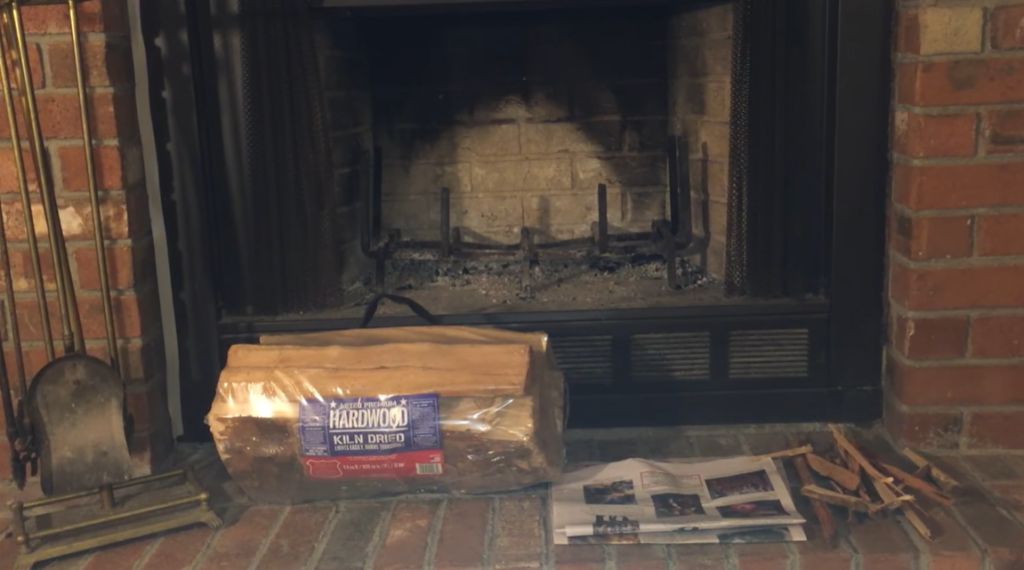
Is cedar harmful to burn?
No, cedar is not harmful to burn if your fireplace is designed for burning wood. Cedar is an excellent firewood because it produces a hot and very aromatic fire. However, it has low density, so it burns quickly and doesn’t stay lit as long as some other types of wood. In addition, cedar gives off less heat per volume than denser hardwoods like oak or maple. If you decide to use cedar in your fireplace, be sure to maintain a clean chimney to avoid any build-up of creosote that can start a dangerous chimney fire. So, while cedar is not harmful to burn it may not be the best choice for a traditional fireplace.
What does cedar do when you burn it?
When burned, cedar releases a pleasant aroma that can help make your home smell fresh and inviting. This smell is caused by the essential oils found in the wood releasing into the air when it’s heated. Cedar also burns slowly, which means you don’t have to constantly add fuel to keep your fire burning. However, it doesn’t burn as hot as some other types of wood, so you may need to add more fuel if you’re looking for a hotter fire. Worth noting, cedar produces more smoke than some other types of wood, so you’ll need to make sure your chimney is functioning properly.
What is the best wood to burn in a fireplace?
When it comes to burning wood in a fireplace, the best option is hardwoods like oak and maple. However, depending on your climate, availability of different types of wood, and other factors such as cost or ease of chopping or splitting, you may decide to burn another type of wood – including cedar.
Cedar is a softwood that can be burned in fireplaces. While not the first choice for fuel due to its low BTU rating (British Thermal Unit), cedar does burn hotter than some other softwoods and creates an attractive flame pattern when burned. In addition, it’s also known for creating pleasant aromas when burned – making it popular with many people who enjoy curling up by the fire.
What wood is poisonous burning?
When burning wood in a fireplace or other structure, you should be aware of the potential for poisonous fumes and smoke. While some woods are safe to burn, such as oak, pine, spruce and cedar, there are others that can be toxic when burned. These include black locust, elm, yew and hackberry. It’s important to consider which type of wood is most suitable for your particular environment before making any decisions about what to burn.
Can I burn any wood in my fireplace?
The answer is both yes and no. When it comes to which types of wood can be burned in a fireplace, the main rule of thumb is that only seasoned hardwood should be burned. Softwoods like pine and cedar do not burn as well or produce as much heat as hardwoods, so they are not recommended for use in fireplaces.
However, there are some cases when burning cedar in a fireplace may be beneficial. Cedar produces an aromatic smoke that can help keep mosquitos away from your home and reduce the presence of other pests. Burning cedar logs can also add character to your interior design by releasing a pleasant scent into the air.
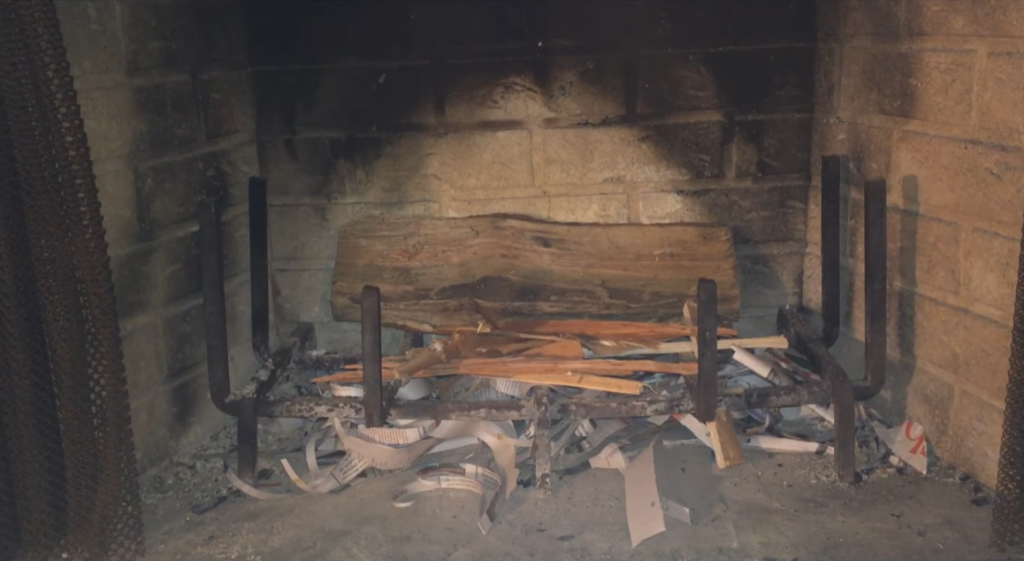
Why should you not burn cedar in your fireplace?
Burning cedar in your fireplace can be dangerous, as the smoke and ash may contain harmful toxins. The aromatic oils in cedar wood can also create a smoldering fire that is difficult to extinguish. Furthermore, burning cedar produces more smoke than other types of wood, which could make your living space uncomfortable and potentially lead to respiratory problems. When burned in an open fireplace, the smoke from cedar will often linger for long periods of time creating an unpleasant odor that takes days to dissipate. It is best to avoid burning any type of softwood such as cedar in a home’s fireplace.
How poisonous is cedar?
Cedar is generally not considered to be toxic, but there are potential health risks associated with burning cedar in your home. Certain species of cedar can produce oil vapor that has been known to irritate eyes and throats, while other species have high levels of smoke that can aggravate respiratory issues. Additionally, burning any type of wood in an enclosed space like a fireplace or stove may release small particles into the air which can be harmful when inhaled. Therefore, if you choose to burn cedar in your fireplace, it is important to ensure proper ventilation and keep the room well-ventilated at all times. It’s also a good idea to regularly check for smoke buildup and make sure that you’re not exceeding safe levels of particulate matter in the air.
Why do natives burn cedar?
Natives of the Pacific Northwest have burned cedar in their fires for centuries. The smell of burning cedar is said to be calming and relaxing, while also filling a room with warmth. While it may not provide as much heat compared to other wood like oak or maple, it can still help create a cozy atmosphere in any room and make the cold winter nights bearable.
Additionally, many people burn cedar because of its therapeutic benefits. Cedar has been used over time to reduce respiratory congestion, clear toxins from the air, improve sleep quality and boost immunity levels.
Is smoke from cedar toxic?
When burned, cedar produces smoke that contains volatile organic compounds and small particles. According to the Environmental Protection Agency (EPA), it’s best to avoid breathing in smoke from any type of wood-burning fire, including cedar. The burning of seasoned woods such as cedar can produce more particulate matter pollution than burning green or unseasoned wood. Particulate matter is considered a health hazard when inhaled for several hours at a time. To reduce your exposure to any particulates from burning cedar in your fireplace, make sure you open a window or door while the fire is going and keep the chimney clean and free of creosote buildup.
Is it safe to burn cedar wood in a fireplace?
While cedar is a type of softwood, it is generally safe to burn cedar wood in a fireplace. Cedar burns well and produces a pleasant aroma, making it a popular choice for many. However, it’s essential to ensure that the cedar wood is well-seasoned, as burning green or damp cedar can lead to excessive creosote buildup in your chimney, posing a fire hazard.
What are the advantages of burning cedar in a fireplace?
Burning cedar in a fireplace has some advantages. Cedar wood burns readily, emits a pleasant fragrance, and can create a cozy atmosphere in your home. It’s a preferred choice for many due to its ease of ignition and the aromatic ambiance it provides when burned.
Are there any precautions to take when burning cedar in a fireplace?
When burning cedar in a fireplace, it’s essential to ensure the wood is well-seasoned, as burning green or damp cedar can lead to creosote buildup in your chimney. Regular chimney maintenance and cleaning are also necessary to reduce the risk of chimney fires. Additionally, always follow safety guidelines and local regulations when using your fireplace.
Can you mix cedar with other types of firewood in a fireplace?
Mixing cedar with other types of firewood in a fireplace is possible and can provide a pleasant aroma and quick-burning qualities. However, ensure that the other wood you mix with cedar is also well-seasoned to prevent creosote buildup. It’s a good practice to follow safety guidelines when mixing woods in your fireplace.
Is cedar a good choice for outdoor fire pits or bonfires?
Cedar is an excellent choice for outdoor fire pits or bonfires. Its aromatic qualities can enhance the outdoor experience, and it burns well in open-air settings. Just like with indoor fireplaces, it’s important to use well-seasoned cedar to ensure a safe and enjoyable outdoor fire.
Useful Video: Can you burn red cedar in your fireplace?
Conclusion
Many people wonder if they can burn cedar in their fireplace for warmth and ambiance. The answer is yes, you can burn cedar in a fireplace but there are certain precautions you should take. Cedar should be seasoned before burning it and burned at low temperatures to avoid excess smoke or sparks. Always make sure your chimney is clean and clear of debris as well. If done correctly, burning cedar in your fireplace can add an inviting aroma and cozy atmosphere to any room. For more information about burning cedar in a fireplace, consult a professional for the best advice.
We hope this article has given you a better understanding of the safety concerns that come along with burning cedar in your fireplace. Remember, safety is always first and foremost! There are plenty of other materials to burn in your fireplace as well, so don’t feel limited by just one option. Keep up with regular maintenance on your fireplace and chimney to ensure the longevity and health of your home.
References:
- https://www.thoughtco.com/using-pine-or-cedar-for-firewood-3971262
- https://modernethanolfireplaces.com/blogs/news/can-you-burn-cedar-in-a-fireplace
- https://fireplacetips.com/burning-cedar-wood/
- https://hvacseer.com/can-you-burn-cedar-in-fireplace/
- https://farmfoodfamily.com/can-you-burn-cedar-in-fireplace/#Does_burning_cedar_create_creosote





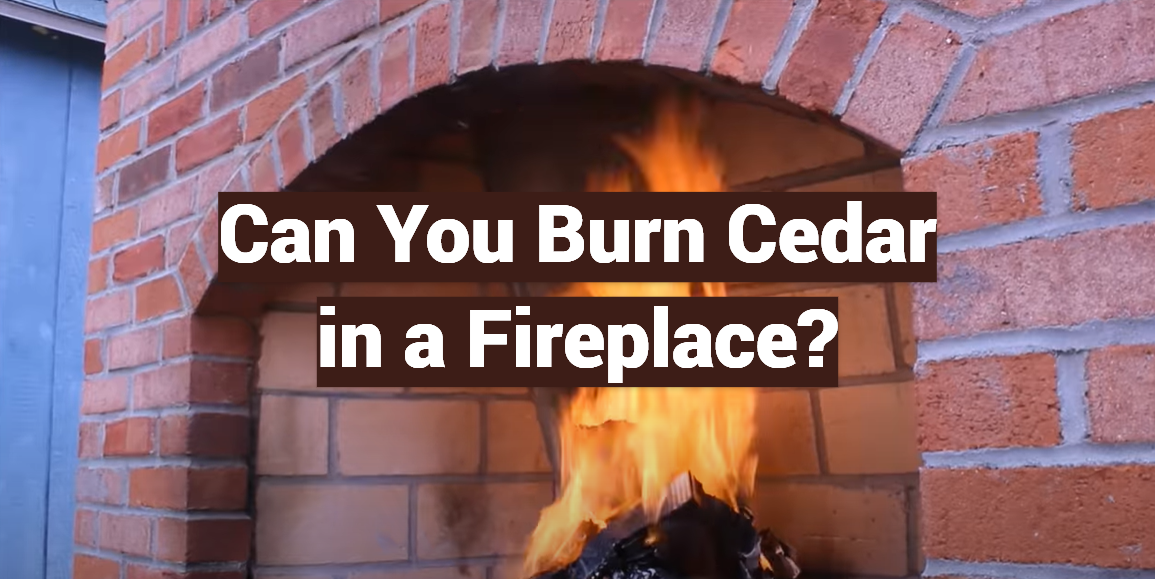




Leave a Review